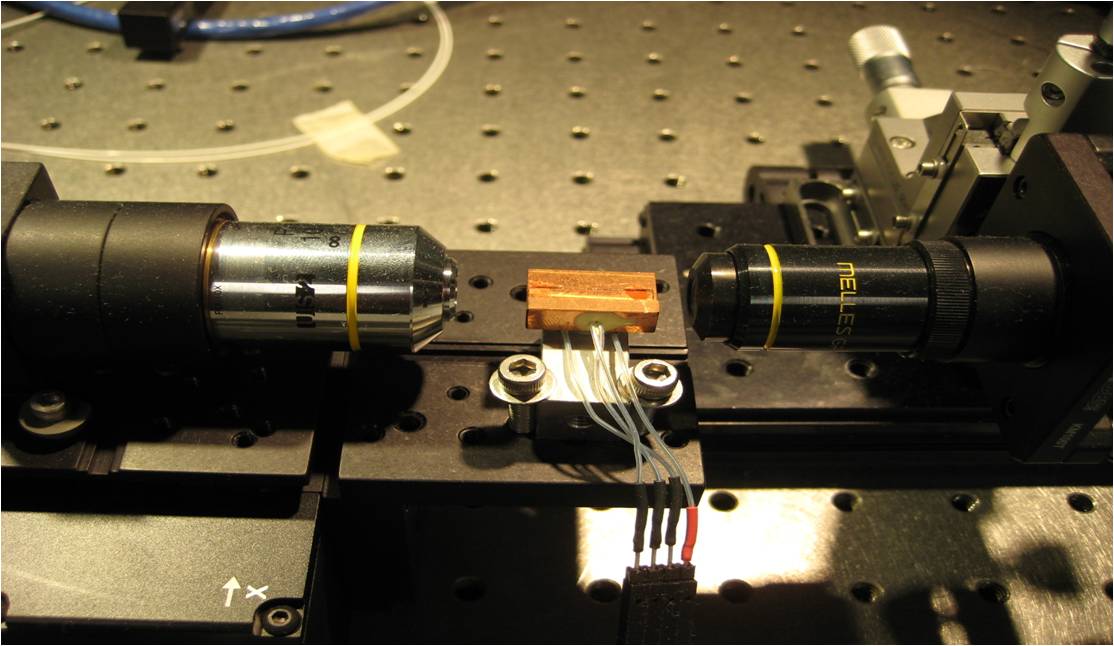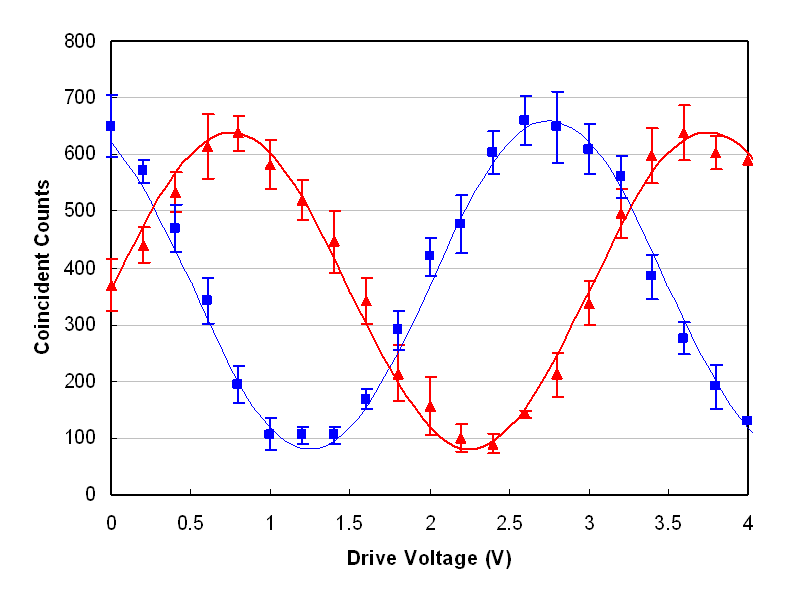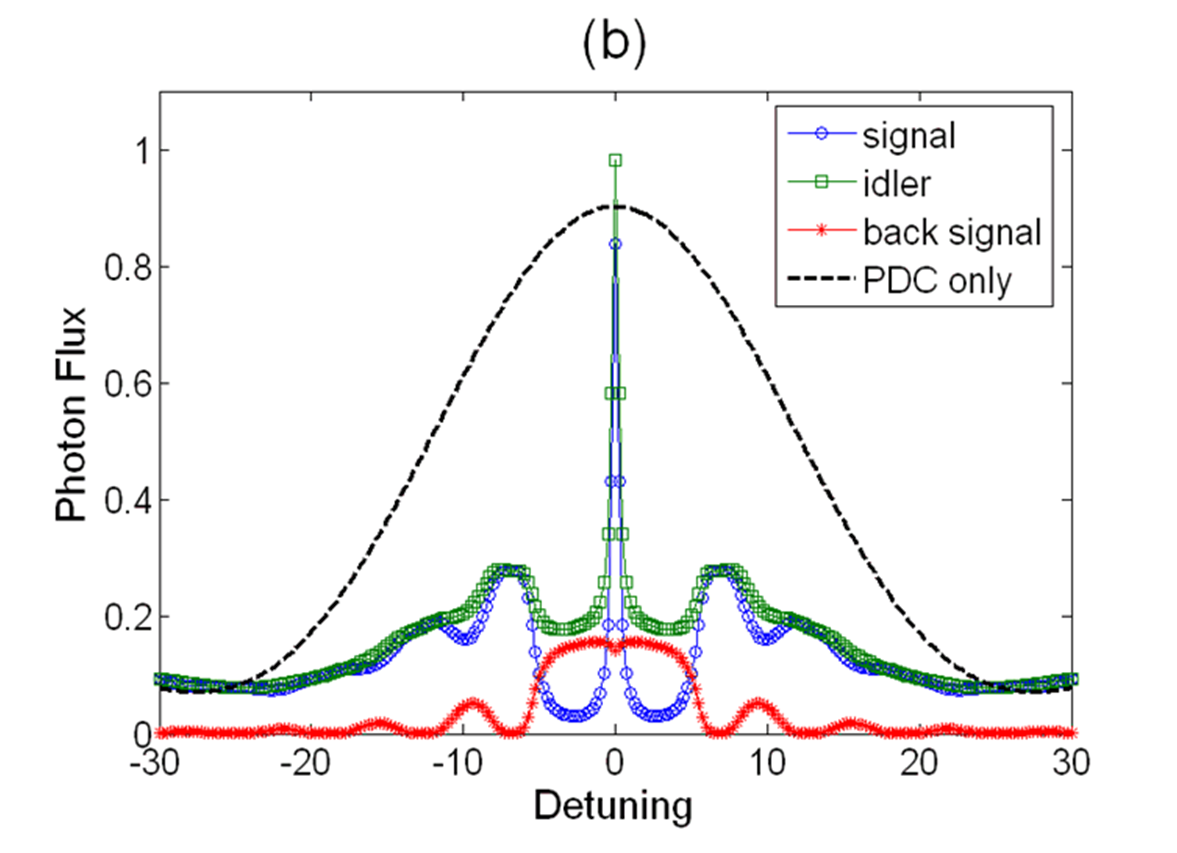Entangled Photon Pair Sources
Home Publications Links Collaborations Team Developments Opportunities
Development of entangled photon pair sources:
Entangled photon pairs are important for the realization of quantum communication and quantum computation. Our basic objective is to develop photon pairs that can interface between flying photonic qubits in optical fiber and stationary atomic qubits in quantum memories. As the fist step, we experimentally implemented a non-degenerate sequential time-bin entangled photon-pair source [1]. The second step, our effort is focused on narrowing the spectral linewidth of the photon pairs so that they can be effectively interact with atoms in the quantum memory [2].
 |
| Experimental setup showing the crystal waveguide in which photon pairs are generated. |
The non-degenerate sequential time-bin entangled photon-pair source is generated from a periodically poled potassium titanyl phosphate waveguide by frequency parametric down-conversion (FPDC) at a clock rate of 1 GHz. The wavelengths of the signal and idler are 895 nm and 1310 nm. Photons at 1310 nm are suitable for long distance optical communications, while the photons at 895 nm match the first transition line of Cs atoms, which is suitable for quantum memory research. A silicon avalanche photodiode is used to detect the photons at 895 nm, and a periodically poled lithium niobate waveguide based up-conversion detector [3] developed in our lab is used to detect the photons at 1310 nm. The measured entangled photon- pair flux rate is 650 Hz and the interference fringe visibility is 79.4% without noise subtraction.
 |
| The entangled photon pair curve |
In order to reduce the spectral linewidth of the entangled photon pairs generated from spontaneous parametric down-conversion (SPDC), we proposed a new approach by incorporating a Bragg grating structure with a midway π-phase shifter onto a nonlinear optical crystal waveguide. In collaboration with University <?xml:namespace prefix = st1 /?>Maryland at BaltimoreCounty, we theoretically studied the line widths of signal and idler photons from the SPDC process. From our theoretical calculation, the approach is promising to generate very narrow line width (~GHz to sub-GHz) signal and idler photons via SPDC.
 |
| Narrowed linewidth with Bragg grating on waveguide |
[1] Lijun Ma, Oliver Slattery, Tiejun Chang and Xiao Tang, "Non-degenerated sequential time-bin entanglement generation using periodically poled KTP waveguide".
Details see: Optics Express, Vol. 17 Issue 18, pp.15799-15807 (2009). PDF: http://www.opticsinfobase.org/abstract.cfm?id=185209&CFID=106038750&CFTOKEN=10685436
[2] Li Yan, Lijun Ma, and Xiao Tang, "Bragg-grating-enhanced narrowband spontaneous parametric downconversion", OPTICS EXPRESS, Vol. 18, No. 6, 5957(March 2010). http://www.opticsinfobase.org/abstract.cfm?URI=oe-18-6-5957
[3] Lijun Ma, Oliver Slattery and Xiao Tang, "Experimental study of high sensitivity infrared spectrometer with waveguide-based up-conversion detector", Optics Express Vol. 17, Issue 16, pp. 14395–14404 (2009). http://www.opticsinfobase.org/abstract.cfm?URI=oe-17-16-14395

